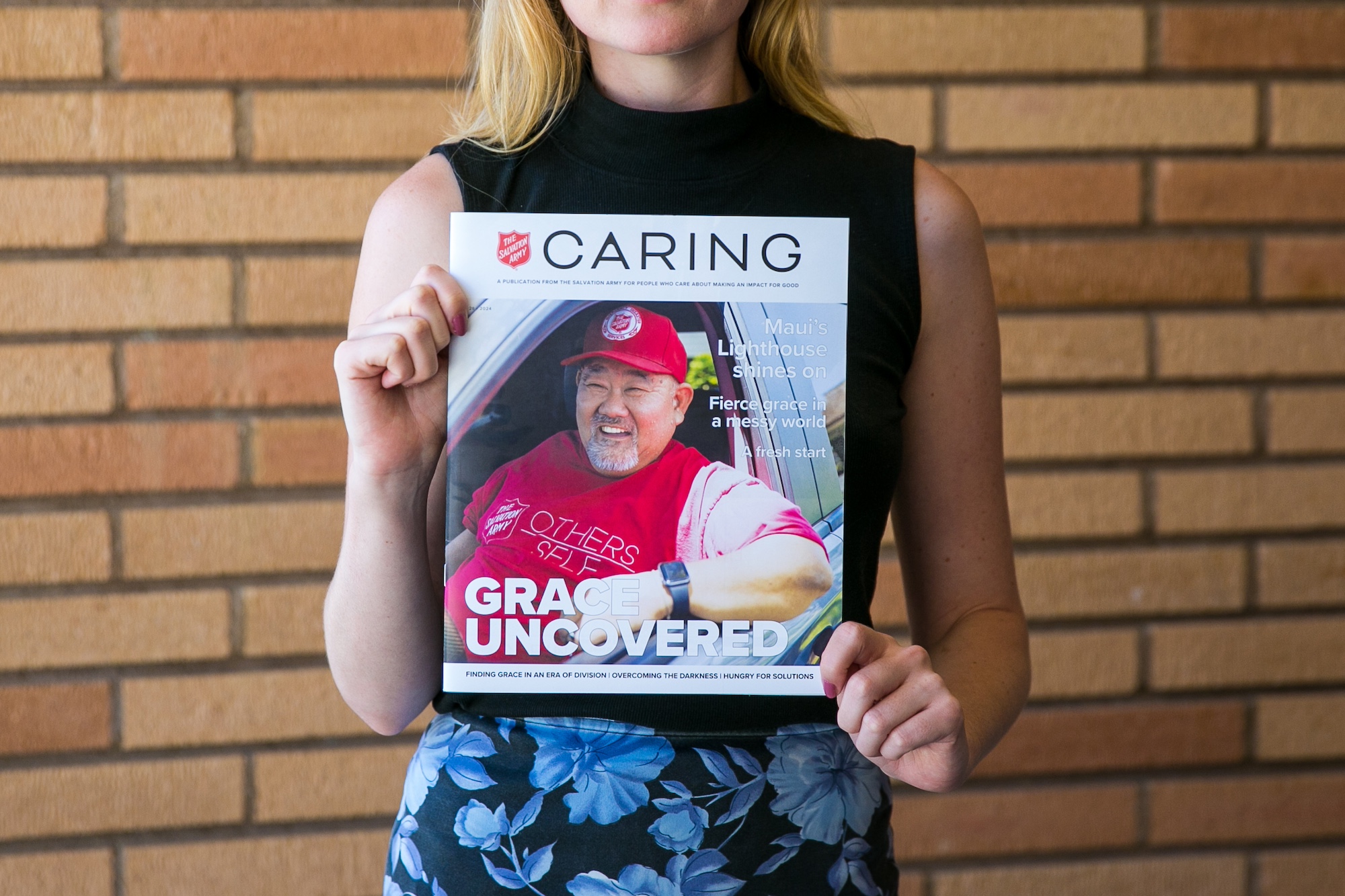Harbor Light and Gateway Programs

by Sue Schumann –
“The Salvation Army has given me back my life,” says Harbor Light Recovery Home resident Johnny La Sorta as he glances at the photos of his family taped to the wall behind his dormitory bed.
Four months ago, La Sorta, 33, was homeless and living in a truck. His wife and 6-year-old son had left him, no longer able to endure his addictive lifestyle–one that began at age 10 when he first started using alcohol and drugs.
His life turned around, however, when he entered Harbor Light’s Homeless Alcoholic Recovery Program (HARP), a 45-day intensive primary recovery program. After graduation, he entered the Recovery Home.
“I’ve been here two months,” he says, “and the first week I was here my family came back to me. They saw I was serious.” He smiles and adds, “They come to church with me here. My son wants to go every week.
His appreciation for the Harbor Light program, and for its role in salvaging his life, is clear.
La Sorta is one of nearly 2,300 people whose lives were touched–some miraculously so–during the past year at The Salvation Army’s Harbor Light complex. Under the leadership of Majors Lawrence and Victoria Shiroma, administrators and corps officers, the Harbor Light is literally a life saver for the perishing.
Harbor Light
Located south of Market Street in one of the city’s light industrial areas, the campus is situated on 1-3/4 acres on what was formerly the Gladding-McBean Tile factory’s campus. Neighbors include the now-vacant Schrader Iron Co. facility, which sits next door on toxin-poisoned ground, a handful of small businesses and, across the street, a parking lot for tour busses and a neighborhood bar called the “Stud.”
“We have no problem here with neighbors complaining about our providing services for the indigent and homeless,” says Captain Debra Shrum, divisional program director.
Clients for the Army’s programs typically have “bottomed out,” with no job, no insurance, no medical benefits, and literally no where else to go. Many have triple addictions and criminal records. Most are homeless and more than 10 percent are living with HIV/AIDS.
Help–and the potential for a changed life–comes through:
* Detoxification Unit: a 35-bed, 3-7 day facility for men and women where individuals can withdraw safely from alcohol and other drugs. (Harbor Light has the largest social model detox in the city.)
* Homeless Alcoholic Recovery Program (HARP): a 24 bed, 45-day intensive primary program for men and women who need a structured program after completing detoxification. Individual and group counseling sessions, alcohol and drug education, recovery planning and relapse prevention are part of the program.
* Recovery Home: a 6-month to one year coed program for 52 individuals. Residents deal with underlying roots of addiction while dealing with medical problems, family relationships, preparation for independent living, schooling and employment.
Two additional components are designed to meet needs of people with HIV/AIDS:
* CARE Unit: an integrated 10-bed residential program for men and women. Services include detoxification, primary and recovery programs, specialized counseling and support groups as well as linkage to community health care facilities.
* CARE Detoxification Unit: a 12-bed, 21-day coed facility for individuals withdrawing from alcohol and other drugs.
In addition, the Lighthouse Corps provides a warm and supportive spiritual component for those who choose to participate. “Most of the other programs in the city have no spiritual emphasis,” explains Major Larry Shiroma. “While chapel is optional here, we average 90-100 from the residential programs and the community on Sundays.”
Gateway
The hallway to the Army’s day care center is graced by artwork–dinosaurs, lambs and flowers–all highlighted by cheerful reds, blues, greens and yellows. Inside, children’s voices fill the air–happy noises made during a snack of juice and crackers while listening to a story. Furniture is kid-sized, the housekeeping corner is cozy, and books and blocks abound.
While it looks and sounds like a typical day care center, the ministry there is anything but. “Almost all the children have been traumatized by homelessness, domestic violence, and substance abuse, and many have been abused by their parents,” says Shiroma. “Our staff tries to provide stable nurturing environment for them.”
The Salvation Army’s Gateway facility provides transitional housing for homeless families with minor children. It has 90 beds to accommodate up to 28 families in rooms and baths that adjust to family size and are clustered around common living room and kitchen areas.
Childcare is licensed for eight infants and 23 preschoolers. It is the largest childcare accommodation for homeless infants in the city.
“The majority of our clients are welfare families, who have been on public assistance for generations,” says Case Manager Lisa Ford, herself a Harbor Light graduate. “We are helping break the cycle of homelessness and drug addiction here and prove to our addicted clients there are better ways to live.”
One woman, she notes, a 41-year-old mother of three, got her first job while there. Others have finished their GED and gone on to city college.
“We make a big impact on lives, especially when people really want help,” she says. “Last year, 80 percent left here employed and with permanent housing.”










